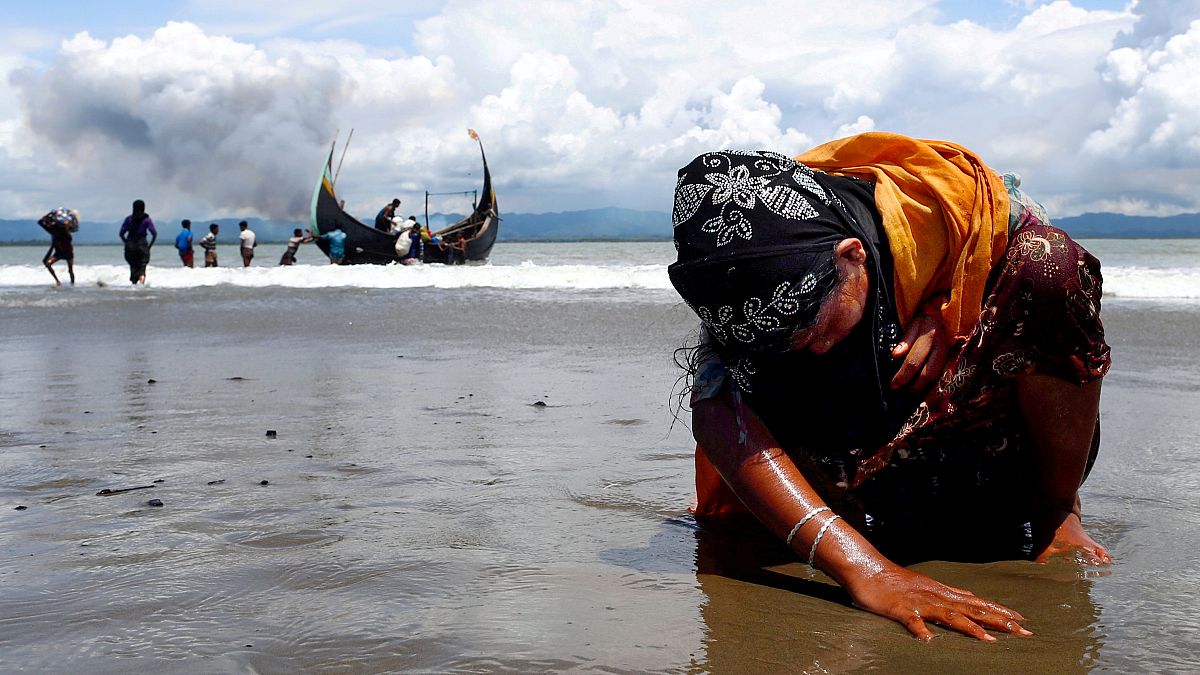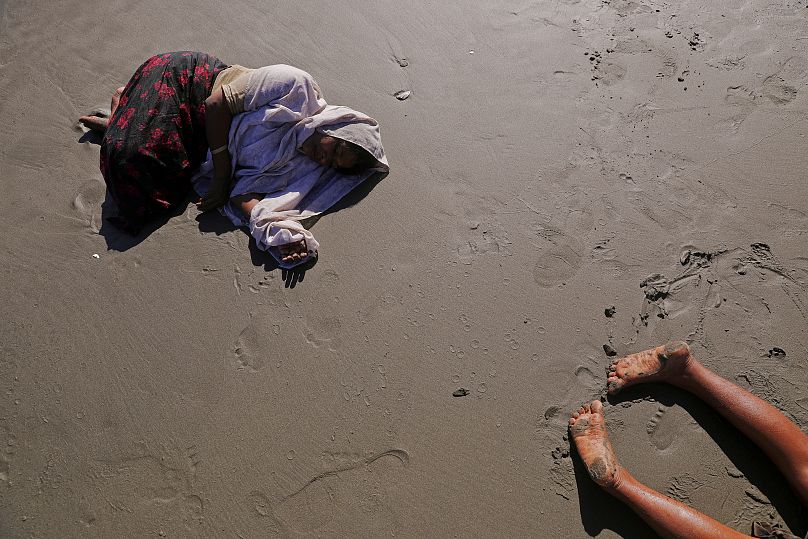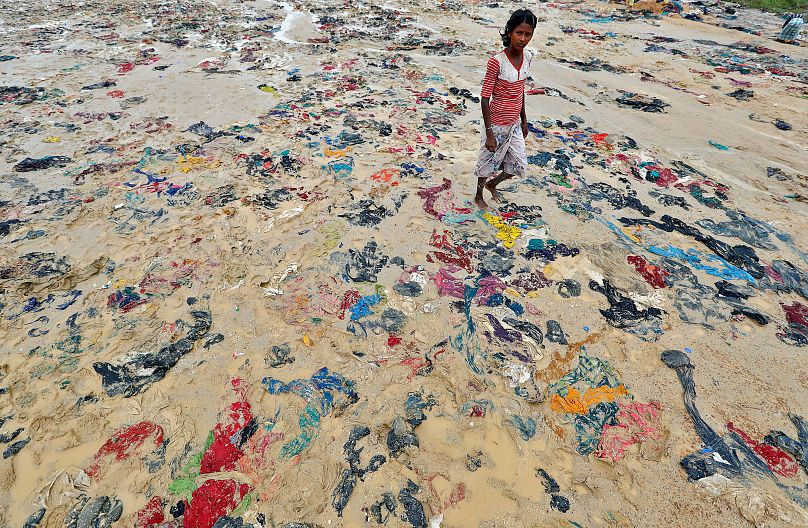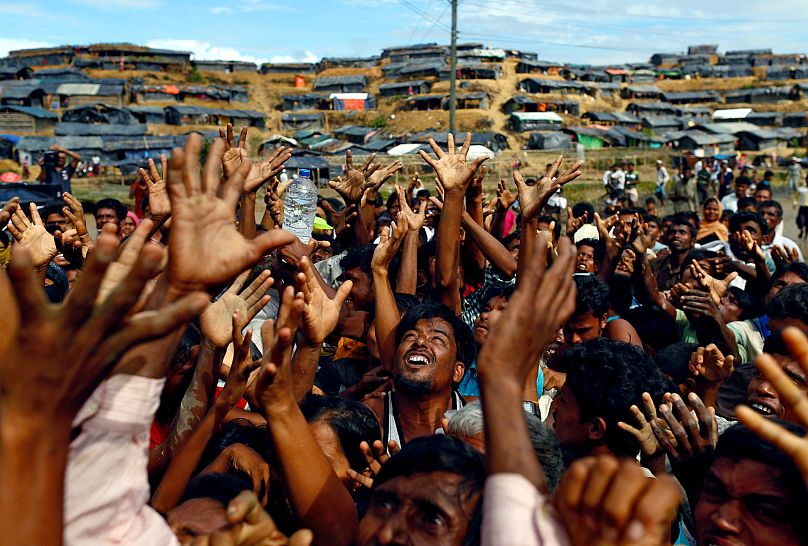This Sunday marks two years since over 740,000 Rohingya people fled northwest Rakhine State when the Myanmar military launched operations there.
This Sunday marks two years since over 740,000 Rohingya people fled northwest Rakhine State when the Myanmar military launched operations there.
United Nations investigators concluded on Thursday that sexual violence committed by Myanmar troops against Rohingya women and girls in 2017 was an indication of the military's "genocidal intent" to destroy the mainly Muslim ethnic minority.
A UN Independent International Fact-Finding Mission on Myanmar said in a report that the country's soldiers "routinely and systematically employed rape, gang rape and other violent and forced sexual acts against women, girls, boys, men and transgender people".
"Hundreds of Rohingya women and girls were raped, with 80% of the rapes corroborated by the Mission being gang rapes. The Tatmadaw (Myanmar military) was responsible for 82% of these gang rapes," the document said.
Myanmar previously rejected the UN’s categorisation of the violence in Rakhine as “one-sided”, saying action following militant attacks on security forces was a legitimate counter-insurgency operation.
It also rejected a previous UN report which called for top Burmese military figures to be investigated for genocide against the Rohingya, with government spokesman Zaw Htay saying the country didn't accept "any resolutions made by the Human Rights Council".
Htay added Myanmar had zero tolerance for human rights violations and had its own Independent Commission of Enquiry to respond to "false allegations made by the UN agencies and other international communities".
Where are the Rohingya now?
Most Rohingya fled to neighbouring Bangladesh, where they have been living in overcrowded refugee camps in Cox's Bazaar.
"Two years after the Myanmar military committed horrific violence in Rakhine State, Rohingya continue to suffer," Save the Children's director for Myanmar, Sri Lanka and Thailand, Michael McGrath, told Euronews.
"In Bangladesh, close to a million refugees are eking out a living in cramped refugee camps with little hope of returning home," he added.
Inside Myanmar, the almost 600,000 Rohingya who remained are "living under apartheid-like conditions, where the state controls every aspect of their lives – including their freedom of movement and access to healthcare and education," McGrath said.
In May 2019, Amnesty International said Myanmar’s military had launched new operations in Rakhine State, following coordinated attacks on police posts by the Arakan Army (AA), an ethnic Rakhine armed group.
The military response has included "unlawful attacks that killed or injured civilians, extrajudicial executions, arbitrary arrests, torture and other ill-treatment, and enforced disappearances," it claimed.
What action has the EU taken?
The Council of the European Union in February 2018 adopted conclusions condemning the "ongoing widespread, systematic grave human rights abuses committed by the Myanmar/Burma military and security forces".
In April 2018, it imposed targeted restrictive measures against individuals from the Myanmar Armed Forces (Tatmadaw) and the Border Guard Police, which it said were "responsible for serious human rights violations, for obstructing the provision of humanitarian assistance to civilians in need and for obstructing the conduct of independent investigations into alleged serious human rights violations or abuses".
What now for the Rohingya?
Since they signed a repatriation arrangement in November 2017, the governments in Bangladesh and Myanmar have announced plans to begin returning Rohingya refugees to Myanmar several times.
However, attempts to persuade the Rohingya to return to Rakhine failed after refugee protests.
On August 15, the two authorities announced plans to repatriate a list of 3,540 individuals, which they had agreed would be returned.
United Nations staff and Bangladeshi officials interviewed those cleared for return, selected from a list of more than 22,000, to determine if they wanted to go.
However, the efforts stalled when all 295 families consulted refused to go back to Myanmar, despite buses and trucks being arranged to carry them across the border.
Read more: Bangladesh bid to repatriate Rohingya stalls as refugees refuse to return to Myanmar
Bangladesh authorities have said that returns will only occur if they are safe, voluntary and dignified, but human rights NGOs have warned Rakhine State remains unsafe.
"The only solution is to dismantle the systematic discrimination against Rohingya in Myanmar and make sure that the rights and opportunities of all communities are equally respected," according to McGrath.
Read more: In pictures: How Rohingya are celebrating Eid in refugees camps



